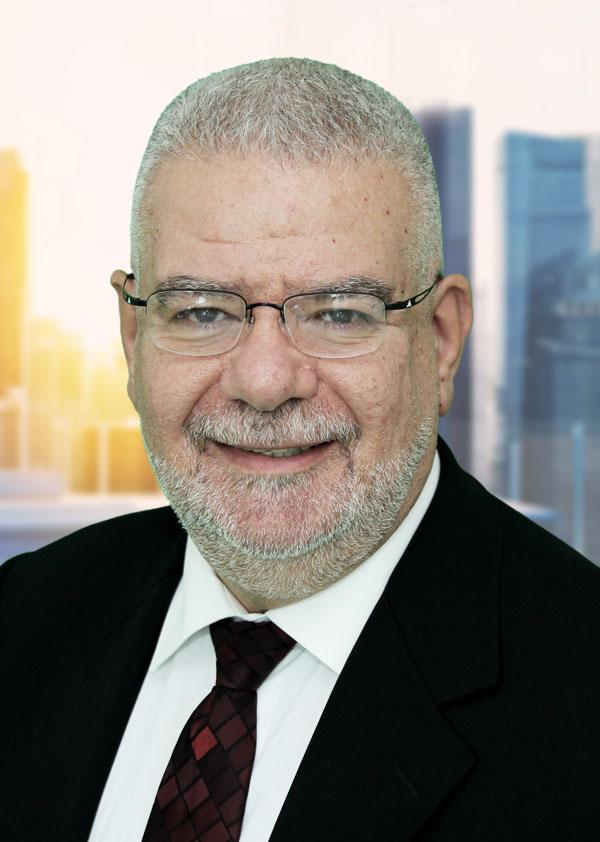The "Black Box"

Beautiful day, beautiful service
It was a beautiful sunny day, and after a pleasant two hour drive with my wife and our two boys we reached our destination: a nice resort hotel on the East coast of the UAE. We had booked our stay a few days earlier on the phone and received our e-mail confirmation with a clear location map. Because it was a free stay earned through a marketing scheme, my wife and I were a bit apprehensive about the quality of service we would be offered. Our kids on the other hand were blissfully oblivious and in extremely high spirits. Reality, we were soon to find out, would ‘Wow!’ us.
I was maneuvering to park our car as the concierge hurried towards us. After greeting us with a smile and polite conversation, he pushed our luggage trolley ahead of us and into the lobby of the hotel. I felt reassured with the concierge’s prompt and unobtrusive help. It looked as If I needn’t have worried about the level of service to expect in the coming two days. As our little family stepped into the entrance lobby, I swept the surroundings with my eyes to find the reception. An impeccably dressed lady with a natural smile approached me and said:” Good morning ‘Mr. Chahrouri’, welcome to XYZ resort. I hope you and your family had a pleasant drive from Dubai”. Needless to say I was a bit taken aback. How on earth did she know I was ‘Mr. Chahrouri’? What will my wife think? However I have to admit her personalized greeting boosted my ego. It made me feel like a VIP. And when I saw my wife and kids’ surprised smiles, I answered the lady with a voice that came out a bit deeper than my usual, and with a debonair tone that signaled to my family something like, “see honey, see kiddos, daddy is an important person; daddy is immediately recognized as soon as he steps into a room”. And I felt special. Actually, I felt super-great!
Now, as a researcher in “customer service”, I wanted to figure out what had happened; And it took me a few hours to understand how that lady had pulled my name out of her magic bag of tricks.
My wife and I had to think back about every step, every action we took from the moment we called the hotel to book our stay until the lady approached us in the lobby. Did she somehow manage to have our description, or a picture of us? She seemed to have a paper in her hand but she wasn’t examining it as we walked in. Had we told the operator what car we were driving? Did the lady ‘google’ and find a photo of us? My wife and I could safely answer all these questions with a ‘no’ or a ‘very unlikely’. The answer had to lie somewhere else.
Ah, the car… our arrival … the concierge! That was it: This nice, polite and unassuming man!!! Here was the key to our puzzle. After much concentration my wife and I remembered the casual conversation we had with the concierge before he rushed into the hotel with his trolley, barely a few steps ahead of us. I imagine he discreetly signaled to the lady and other staff members (all of whom, by the way, knew our names) the name of the guests following him. What had seemed like casual conversation was in fact a well prepared and rehearsed set of comments and questions designed to make us disclose our identity unintentionally. Everything from the moment our car was spotted entering the hotel parking until that moment when the lady astonished us by using my name had been carefully orchestrated to make us feel like royalty.
In fact it slowly dawned on me the whole operation had been orchestrated from the moment I called the hotel to make the booking. The phone operator took my name, asked me to spell it out and made sure she had the pronunciation right. That lady who welcomed us on arrival at the hotel had it perfectly nailed down! This alone was quite an impressive achievement.
Let me recapitulate what happened as I understand it:
- A customer calls the hotel to make a booking.
- The phone operator takes the name, down to the correct pronunciation.
- The name of the guests expected on a certain date are printed (phonetically also) on an easy to browse list.
- On the designated date, the list is given to the welcoming team (at least to the concierge and reception).
- When a car enters the property, the concierge sends someone to the car.
- The concierge discreetly extracts information from the guests.
- The concierge makes sure he enters the lobby ahead of the guests.
- Reception is standing in place ready to get from the concierge the name of the guest.
- The concierge signals the name to reception.
- Reception finds the name on her list and rehearses it one last time before the customer enters the lobby.
- Then she stands ready, waiting for the guest to step in so she can approach him in the most natural way and greet him as if he were the most important person in the world.
- The guest experiences the pinnacle of all customer service experiences: The “Wow!” event.
Heroic employees: necessary but not sufficient

This “Wow!” event, as can be inferred from my story is clearly not a matter of serendipity. Nor is it the daring act of a heroic employee with exceptional customer service skills. In fact, one can almost say it is the result of a ‘conspiracy’ involving many layers of the hotel hierarchy, from the top echelons down to those on the first lines. What’s more, my contention here is that exceptional customer service cannot and should not be left to the vagaries of random events or to the whims of your most qualified employees.
All too often I have seen well-intentioned managers keen on improving the service level in their companies or departments who would focus all their efforts on front line employees: those that have direct interface with the customer. They would coach them and train them on communication skills and how to handle upset customers. These efforts are to be commended, and those skills imparted on the front liners are absolutely necessary. However they are insufficient. While front-liners’ skills play an important role in the ‘customer delight’ equation, they fall short in providing the consistent service level aspired to by those well intentioned managers.
Let’s think about this for a moment. Let’s think back about those moments when we felt:”Wow! That’s what I call service”. These events feel natural, unrehearsed and give us, the customers, a sense of well being and warmth. However, they almost always rely on a chain of activities involving a string of employees and departments, what I call the “black box”, who act behind the scenes to trigger this elusive “Wow!” response.
Please take back your shoes
Think about the simple act of returning a recently purchased pair of shoes that are hurting your feet: You hesitantly enter the shop discreetly carrying the shoes in their original box inside a random bag you found at home. Taking your courage in both hands you approach one of the attending salespeople. Let’s assume that everything works perfectly: after explaining your problem, the salesperson, always with an encouraging smile, gives you the choice of replacing your pair with another one from the shop, or, if you find nothing to your liking, you get your money back. Whatever your choice, the salesperson obliges and closes the matter professionally with no hiccups, delays, requests for receipts, lengthy explanations or cumbersome forms to fill. Surely the interpersonal skills of the polite, well trained salesperson are very important here; but, with all the salesperson’s efforts and goodwill he would never have been able to delight the customer without the whole support system lurking invisibly behind him in the ‘black box’. That ‘black box’ was operating in full swing here. This simple act of returning cash for shoes requires active efforts from:
- Cashier,
- Sales supervisor,
- Store manager,
Accounting department, as well as other adjustments made in many areas including:
- Central stores,
- Inventory, warehousing
- And, even maybe, administration who would have to go through the process of returning the shoes to the supplier in order to get a refund.
All these various elements must be pre-organized to accommodate in perfect choreography the simple request of returning a pair of shoes.
B2C or B2B: The conspiracy of ‘Wow!’

The same ‘black box’ concept can be seen at work in most superior service situations whatever the organization or the sector within which it operates. Moving away from the retail or hotel businesses we can look at the B2B environment which is generally less concerned with the intangible world of feelings than with down to earth considerations such as price, delivery time and profits.
Here again the ability of a sales manager to agree to exceptionally airfreight an order that was priced based on the much cheaper sea freight relies heavily on a flurry of back office activities. Marketing, finance, logistics and sales will have to work, analyze and combine their findings to reach an intelligent decision. To do so would require:
- The culture of the firm to be amenable to such exceptions
- The logistics and transportation employees to come up with exact shipping cost comparisons through their freight forwarder
- The sales people to determine whether the request from the customer is justifiable based on the competitive situation and other factors
- A financial analyst, with the help of marketing, to determine the real impact of the additional costs based on the ‘life-time value’ of this customer
- Marketing to estimate the overall impact on the image of the company
Then, and only then, should the polite and well trained sales manager inform the customer that yes, it will be his ‘pleasure’ to allow partial air shipment of the goods. The procedures to reach such a conclusion must be in place and should be able to operate seamlessly in order achieve the expected level of delight. Once again we realize that for all their training and good intentions, single employees will not be able to produce the “Wow!” event without the ‘black box’ aiming to help them do so.
Conclusion: The customer-centric organization

At this stage, and after three very different examples, we can confidently claim that “Wow!” experiences are the result of a whole string of behind the scenes activities involving
- Many employees
- Different hierarchical levels
- Different departments of the organization
These activities are judiciously selected, planned, designed, rehearsed, supported and rewarded until they become part of the organization’s DNA. This implies adopting customer service as a strategic initiative. It requires the creation of an all pervasive customer service culture; in other terms, it requires the development of a customer-centric organization.
Peter Drucker, considered by many to be the ‘Father of Management’, said that “the single most important thing to remember about any enterprise is that there are no results inside its walls. The result of a business is a satisfied customer”. If that is the case then everything that constitutes any enterprise has to blend harmoniously towards that end. From its vision to its strategies, organizational structure, processes and procedures, all its efforts and investments have to have customer satisfaction as a common focus. In a customer-centric organization there is no task, nothing at all, that does not somehow contribute to achieving customer satisfaction.
How far have we come from naively dumping the bulk of this colossal burden on the shoulders of our front liners.
Mr. Chahrouri is a Senior Consultant with Meirc Training & Consulting. With Meirc, Mr. Chahrouri provides training and development programs and solutions in general management, interpersonal and communication skills, self-development, as well as customer service, marketing and sales training.
Related Articles

Redefining Customer Experience in the Digital Age
Customer experience is the quality of a consumer's interactions with a…

Should organizations allow customers to complain?
In this globalized world competition is fierce at all levels. Segments…

AI, Chatbots and Customer Service
The future of customer service has become a recurring topic in the training…

The Secret: Innovation by Numbers
I have yet to hear about an organization that does not claim to value…
